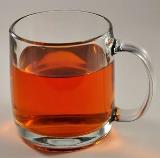|
|
Pet safe lawn fertilizer is easy to create with Ocean Trace sea minerals
Pet safe lawn fertilizer is a must!
Chemical fertilizers can make your pet very ill -
Pets can pick up fertilizer chemicals in their hair and on their feet, and when they clean their coat or feet, they can ingest them. When pets chew on grass, they may ingest fertilizer. By rolling in the grass, pets can absorb chemicals right through their skin. To avoid all of these problems, it is best to use a pet safe lawn fertilizer. Besides, organic fertilizers improve the natural resistance of the grass towards pests and insects.
Common items for pet safe lawn fertilizer -
are harmless for your pet, and help grow grass naturally. Composted manure (available at Lowe’s or Home Depot), peat compost, fish emulsion, kelp, blood and bone meal and worm castings.
If you prefer, you can make your own
compost.
A container for making compost, along with instructions, may be purchased at a garden supply store. Items that can be composted are garden greens, weeds, left over food, Gypsum or Lime, fruit and vegetable peels, egg shells, straw, dried leaves, wood chips and your pet’s poop. Mix with dirt, and let compost. Once your biodegradable material is fully composted, it will look like black dirt. (Gypson and Lime aid in the composting process by reducing nitrogen losses, which reduces unpleasant odors. Blend 1 pound with each wheel barrow load.)
Where pets are concerned, the following items are toxic for your pet and should not be added to your compost:: Coffee, moldy food, coffee grounds, avocado, macadamia nuts, grapes, raisins, yeast dough, onions, garlic, and chives.
The following four items make up a complete program for pet safe lawn fertilizer: - Grass recycling is a great way to return nutrients to your lawn. Just mow regularly, preferably with a mulching blade on your mower, and grass clippings will quickly decompose and release nutrients to fertilize the lawn. Studies done by the University of Florida show that grass clippings contain around 3% nitrogen. One hundred pounds of dry grass clippings contain about the same amount of nitrogen as a 50-pound bag of 6-6-6. Grass clippings also return phosphorus, potassium, iron and manganese to the soil. Not only do grass clippings not contribute to thatch buildup, but they contain sugars which stimulate microbes to decompose thatch.
- Calcium is the single most important mineral needed for plant and soil nutrition. When calcium is flowing in your soil, everything is flowing. If your soil pH is low (as found in the Southeast USA), then apply Calcium Carbonate. Good sources are egg shells (dry, then pulverize in a blender), oyster shell powder, or limestone (also known as “lime”). For low pH soils, do not apply a Calcium that contains Magnesium. If your soil pH is high (as found in the Midwest), apply calcium sulfate, also known as Gypsum. Calcium Carbonate and Calcium Sulfate are both natural products and considered safe for pets. A typical application of calcium is three to six 50 lb. bags per 2,400 sq. ft. each spring and fall. A soil test will give you an idea of how much Calcium your soil needs.
- Humic and Fulvic Acids contain Nitrogen, Phosphorus, and Potassium, plus an array of micro-nutrients. They help to stimulate bacterial activity in the soil, and break down toxins. Not only are they great for rejuvenating the soil, but they are completely natural and safe for your pet. Apply one pint per 2,400 square feet of lawn at the beginning of the season, mid season, and in the fall.
- Concentrated Sea Minerals contain potassium, chloride, magnesium, sulfur and sodium, plus are an incredible source of trace minerals. An 8 oz. bottle treats 2,400 square feet of lawn. This product is actually used by some as a mineral supplement for animals – that is how safe it is!
To apply
Humic/Fulvic Acids, and Concentrated Sea Minerals
, use a conventional sprayer, a hand sprayer, a watering can, a back pack sprayer, a hose end sprayer, or run it through an irrigation or fertigation system. If you use a hose end sprayer, set the dial to 2 ounces per gallon of water.
Once you spread your pet safe lawn fertilizer on your lawn it is best to water it in (or apply before a rain). This will begin the biological activity to break it down and make the nutrients available to your grass.
When using pet safe lawn fertilizer, how do you keep out weeds?Weed killers are dangerous for pets, and are linked to cancer in pets and humans. One of the best ways to create a thick lush carpet of grass is by over-seeding. When your grass is thick, it will naturally choke out weeds.
Weed control through proper soil nutrition. In 1999 we moved into our home in Georgia. The front lawn was totally weeds. Each year I used Grass Recycling, Calcium and Humic/Fulvic Acids. The first year, grass appeared out of nowhere, and we had a 6’ x 12’ patch of Bermuda grass. The second year I added Sea Minerals to the mix, and the grass spread to about a 20’ x 25’ area. By the third year, grass had choked out most of the weeds and filled in the whole area in front of the house. Grass thrives in good soil, weeds thrive in sick soil. Weeds are there for the purpose restoring sick soil. Feed your lawn with a good pet safe lawn fertilizer program, and watch your grass thrive!
Return from Pet Safe Lawn Fertilizer to Types of Fertilizers
Return to Eagle Wood Home Page
|
|
|



